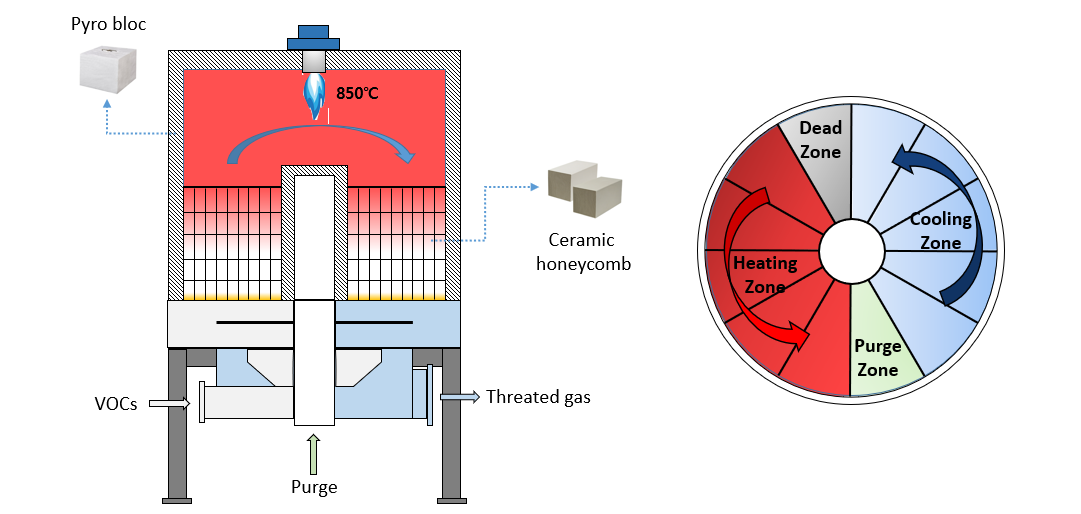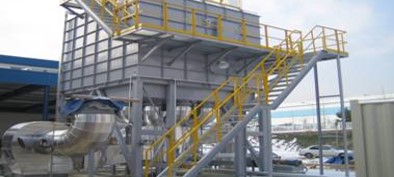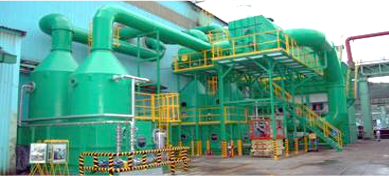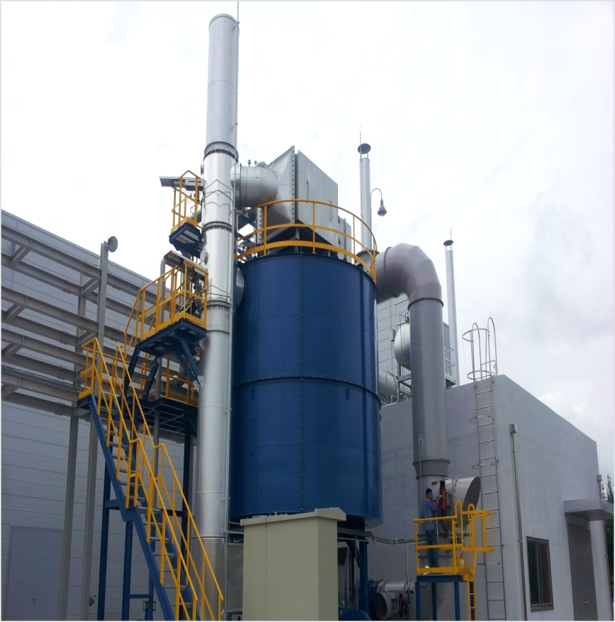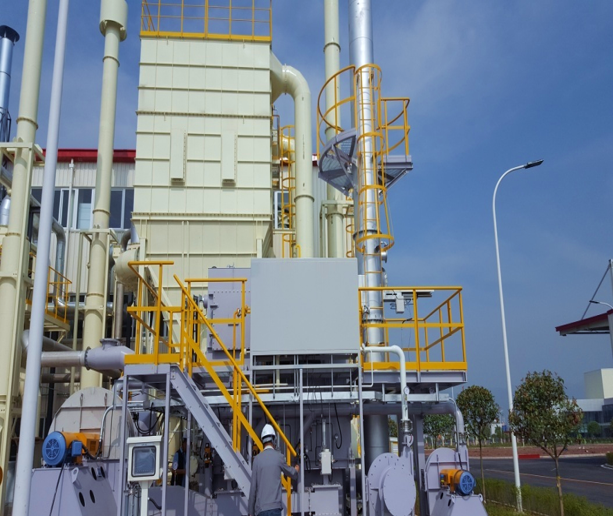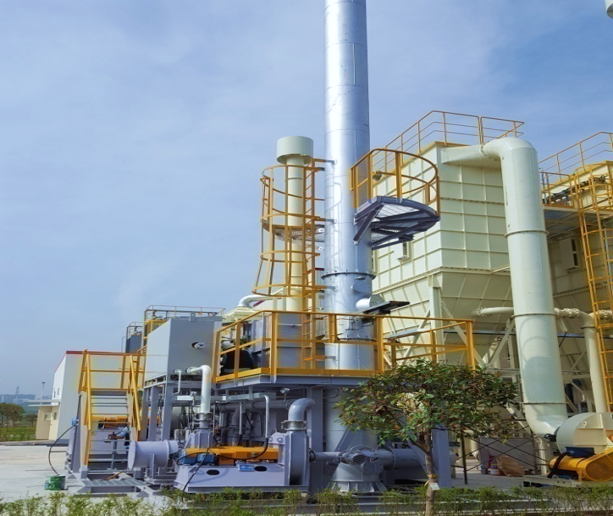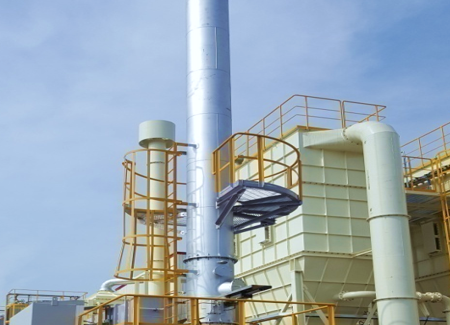
RTO
(REGENERATIVE THERMAL OXDIZER)
The heat storage combustion oxidation facility is a device that oxidizes low concentrations of volatile organic compounds (VOCs), odors, and waste gases generated in the process at high temperatures (750 to 850℃). It is an economic facility that can maintain a heat recovery rate of more than 95% through a direct heat exchange method using ceramic heat storage materials. VOC processing efficiency can be maintained at least 95% for 2Bed type RTO and 98% for 3BED and One can type.
Our Services01
RTO Operating principleIn order to preheat the VOC gas emitted from the process, it is in direct contact with a heated storage material such as ceramic having a large surface area, It is heated to a combustion temperature or higher, and after combustion, high-temperature waste gas transfers heat to the cooled heat storage material and is discharged to the atmosphere at low temperatures. During the combustion process, the organic compound is oxidized to CxHy + (x+y/4)O2 xCO2 + y/2 H2O.
02
RTO Design processIn the design stage, the basic design is carried out by identifying whether the pre-treatment facility is necessary and the appropriate combustion temperature according to the waste gas flow rate, temperature, concentration, and physical properties. Our company is designed to make the most of the energy generated during combustion of waste gas so that it can operate without fuel, and if the amount of heat generated is insufficient, the amount of auxiliary fuel used is It is designed to minimize it. If the amount of heat generated during combustion of waste gas is high and surplus heat is generated, use our waste heat recovery system. It provides an optimal system that can be widely used, such as heating water, steam production, heat medium oil, and process gas heating.
3Bed RTO
It has high processing efficiency as a model that has been continuously used so far in Europe and some processes. 2Bed's unreachable gas problem was introduced 1Bed additionally, High processing efficiency can be obtained by purging. As an advantage, it is easy to clean each bed and can be installed on a small site. It doesn't affect pressure hunting. Suitable for processes that require frequent ceramic cleaning. The maintenance quantity of the valve is large, but it is easy to replace and can be replaced in a short time. Facility costs are relatively high. Treatment efficiency and thermal efficiency can be maintained at 98% or more and 95% or more, respectively.
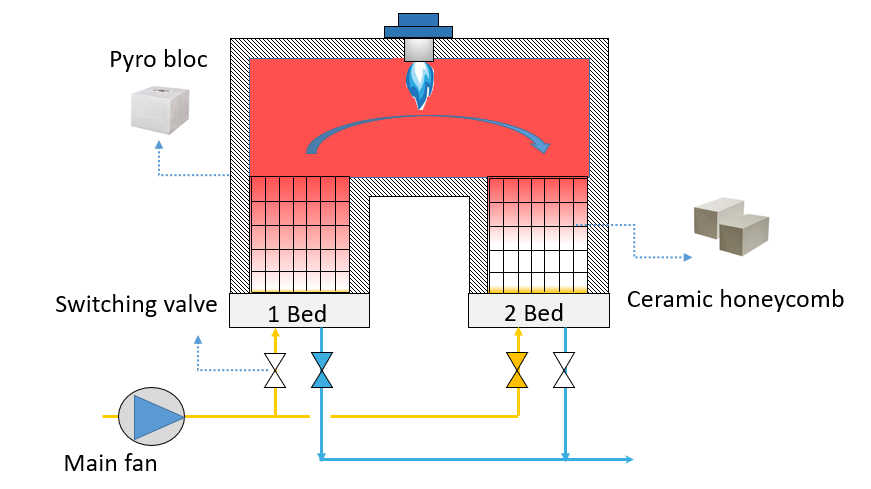
Multi Bed RTO
It is used in large-capacity waste gas treatment facilities by utilizing multiple beds. In terms of domestic performance, there is a case of 150,000 Nm3/hr capacity. Attention should be paid to the energy balance design of ceramic heat storage materials. Treatment efficiency and thermal efficiency can be maintained at 98% or more and 95% or more, respectively.
Rotary One Can RTO
It was developed to solve the pressure hunting problem that occurs when switching the bed-type valve in the most widely used method in Korea. The rotary type RTO has a number of beds (8 to 12), and unlike the bed type, one rotary valve in charge of inlet/outlet/fuzzy conversion is used. The circuit-type distributor reduces pressure hunting, facilitates maintenance, and maximizes the utilization rate of ceramic heat storage materials. (Dead space minimization) The general rotation speed of the rotary valve is around 3 RPM, and the processing efficiency and thermal efficiency can be maintained at 98% or more and 95% or more, respectively.
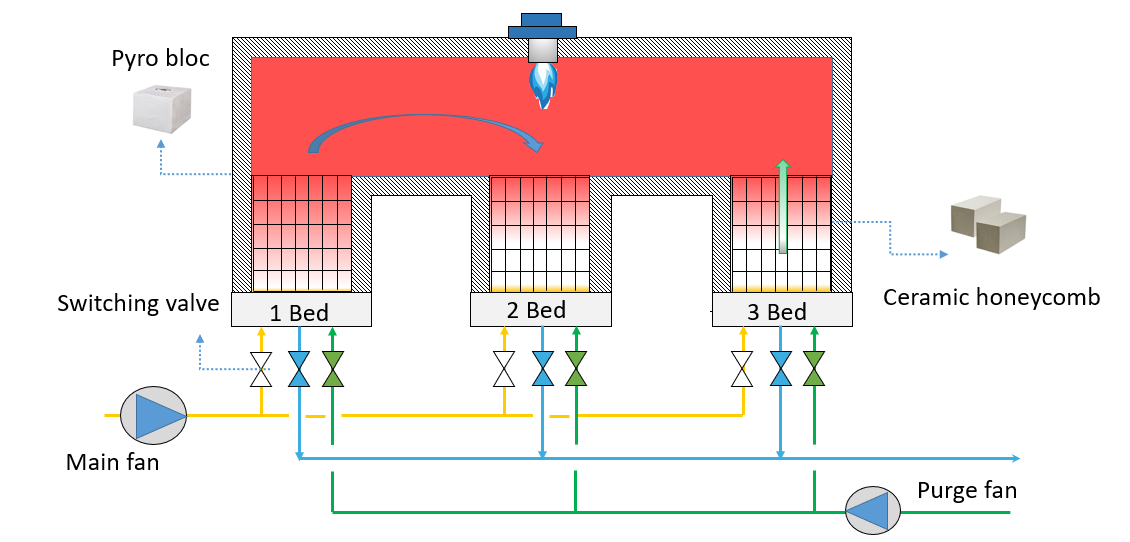
2Bed RTO
As an initial model of RTO, VOC gas is heated by 1 bed and radiated from 2 beds, and at this time, heating and heat dissipation are performed simultaneously. (On the contrary, in ceramic heat storage materials, heat dissipation and heat storage are performed simultaneously. )Depending on capacity and efficiency for bed conversion A valve and a damper (slide gate, butterfly, or popet method) are used, and heat storage and heat dissipation of the ceramic heat storage material continue alternately once every 100 seconds or less. This method is suitable for processes with less than 95% treatment efficiency and no effect on low concentration gas and pressure hunting.
